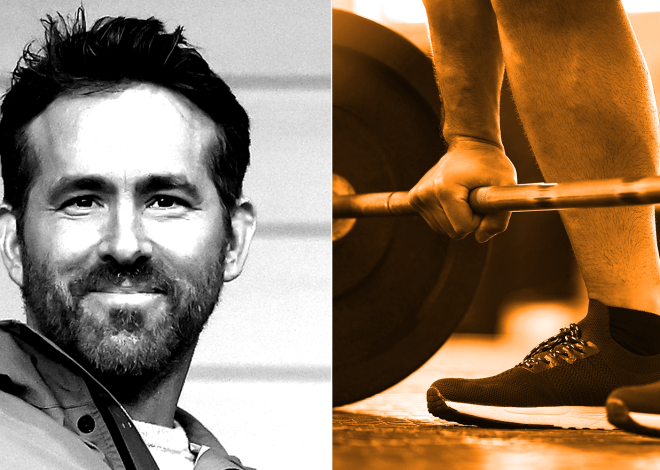
Counting steps or focusing on training time – which is better?
Press

Smartwatches, cell phone apps and fitness trackers are popular for measuring daily steps. But how useful are step goals compared to time-based training goals when it comes to the effects on health? A new study provides evidence.
With smartphone apps, fitness trackers, running watches or smartwatches, it is easier than ever to measure and track the steps you take and your training activities. But what actually makes more sense if you want to do something for your health: Should you set a certain step goal or achieve a specific number of minutes of training time? Scientists from the renowned Brigham and Women’s Hospital (BWH) in Boston provide an answer to this question.
Movement recommendations according to steps and time requirements
For a long time, 10,000 steps a day was considered the big goal to do something good for your health. However, this number was not scientifically evaluated, but rather propagated through advertising activities by a Japanese pedometer manufacturer. Several studies show that taking significantly fewer steps a day can reduce the risk of diseases such as cardiovascular disease or diabetes and increase fitness.
Australian researchers investigated whether walking a certain number of steps could reduce the health risks associated with prolonged sitting. The results: Even if people sit most of the day, they can benefit maximally from their health if they walk 9,000 to around 10,500 steps a day. However, the risk of death and cardiovascular disease were reduced from just 2,200 steps per day.
However, doctors, health authorities and organizations usually do not issue a specific recommendation for steps per day, but rather define the movement goal based on the training time. For example, the World Health Organization (WHO) exercise guidelines for 18 to 65 year olds read:
- at least 150 to 300 minutes of moderate exercise per week
or - 75 to 150 minutes of intensive exercise per week
Many health-oriented athletes therefore ask themselves the question: Should training be measured in steps or minutes?
Read more: The ideal time of day for exercise to prolong life
Training plan “Fit for Hiking” as a PDF
Hiking without pain and even more fun: Strengthen all relevant muscle groups and increase your endurance with our 12-week “Fit for Hiking” training plan – simply download it for free as a PDF.
Register once with our media login USER.ID and benefit from numerous advantages.

Steps or training time: This is how the study worked
A recent study published in JAMA Internal Medicine suggests that both step- and time-based exercise goals are equally associated with a lower risk of premature death and cardiovascular disease. Therefore, deciding on a time or step goal might be less relevant than choosing a goal that fits personal preferences.
“As more people use smartwatches to measure their steps and overall health, we recognized the importance of determining how step-based measurements compare to time-based goals in terms of their association with health outcomes – is one better than the other?” says Dr. Rikuta Hamaya, study author and researcher at BWH in a university announcement.
For this study, researchers collected data from 14,399 healthy women (no cardiovascular disease or cancer) who participated in the Women’s Health Study. Participants (62 years and older) were asked to wear research-grade wearables to record their physical activity for seven consecutive days. They were only allowed to remove the devices when sleeping or in the water.
During the study period (2011 to 2015), relevant health outcomes were determined via questionnaire every year, in particular deaths from any cause and cardiovascular diseases. The participants’ follow-up period ended in 2022.
Read more: Cycling or running – which is better for fitness and weight loss?
The results of the study in detail
The following activity data was determined for the participants:
- an average of 62 minutes of moderate to vigorous intensity physical activity per week
- an average of 5183 steps per day
During an average follow-up period of nine years, around 9 percent of the test subjects died and around 4 percent developed cardiovascular disease.
The more physically active the participants were – whether measured as number of steps or exercise time – the more significantly the risk of death or cardiovascular disease was reduced. The most active 25 percent of women had 30 to 40 percent risk reductions compared to the least active 25 percent. The least active people had, on average, a lower life expectancy than the more active ones – regardless of differences in body mass index (BMI).
When critically assessing the study, it must be mentioned that it is based on only a single assessment of activity data. Furthermore, only women were included – mostly white and of higher socioeconomic status. Observational studies cannot demonstrate causal relationships. In the future, researchers hope to collect data via a randomized controlled trial to better understand the relationship between time- and step-based movement data and health.
Also interesting: Study shows surprising connection between hard running training and life expectancy
Conclusion: The best way to measure your training
Although step counting doesn’t work for every sport (e.g. swimming, cycling, bodyweight training with planks, push-ups, etc.), it can be used for some activities such as walking, hiking and running, not only during exercise but also in everyday life. However, this does not mean that step counting is the best way to track these types of activities.
It is primarily a decision of personal preference as to how best to track and evaluate your training. Some new exercisers find it easier to stay motivated when they reach a certain step goal. This can also simply be increased gradually and make the improved fitness visible. For others, such a goal puts too much pressure and an exercise time of 30 to 45 minutes a day would make more sense.
In addition, a pure step goal does not take into account what pace you walk or run or whether you walk stairs, uphill and downhill (e.g. when trail running or hiking) or only on the flat. However, these factors not only influence step length and frequency, but above all the intensity of the training – and thus also the influence on fitness and health. Heart rate is a good way to track stress during activity. So you shouldn’t ignore these when you measure your training or movement – be it via steps or time.
Tip: In our PDF library, athletes of all fitness levels can find structured training plans and workouts for free download – perfect for motivated pursuit of a fitness goal and ultimately achieving it. Some examples;
Enjoy the training!
The author is a former competitive athlete (alpine skiing and ski cross), certified fitness trainer (B license) and ski instructor.

Ethel Purdy – Medical Blogger & Pharmacist
Bridging the world of wellness and science, Ethel Purdy is a professional voice in healthcare with a passion for sharing knowledge. At 36, she stands at the confluence of medical expertise and the written word, holding a pharmacy degree acquired under the rigorous education systems of Germany and Estonia.
Her pursuit of medicine was fueled by a desire to understand the intricacies of human health and to contribute to the community’s understanding of it. Transitioning seamlessly into the realm of blogging, Ethel has found a platform to demystify complex medical concepts for the everyday reader.
Ethel’s commitment to the world of medicine extends beyond her professional life into a personal commitment to health and wellness. Her hobbies reflect this dedication, often involving research on the latest medical advances, participating in wellness communities, and exploring the vast and varied dimensions of health.
Join Ethel as she distills her pharmaceutical knowledge into accessible wisdom, fostering an environment where science meets lifestyle and everyone is invited to learn. Whether you’re looking for insights into the latest health trends or trustworthy medical advice, Ethel’s blog is your gateway to the nexus of healthcare and daily living.



